At the end of this symbiosis lesson plan, students will be able to identify the basic characteristics of a symbiotic relationship, including mutualism, commensalism, and parasitism, and list examples. Each lesson is designed using the 5E method of instruction to ensure maximum comprehension by the students.
The following post will walk you through each of the steps and activities from the symbiosis lesson plan.
ENGAGEMENT
Objective Introduction
At the beginning of the lesson, the class will do a Think-Pair-Share to discuss the objective.
Class Activity
- Ask students if they have heard of the term symbiosis. Define it for them as a relationship between two different species.
- Have them work in pairs and see if they can come up with some examples of symbiosis.
- Tell students they will be learning about three different symbiotic relationships in their next lesson.
Student Activity
Have them work in pairs and see if they can come up with some examples of the following:
- Two distinct species where one is helped and one is harmed. Do not consider predator/prey relationships as they are not symbiotic.
- Two distinct species where one is helped and the other is not affected – it is neither harmed nor helped.
- Two distinct species where both organisms help each other.
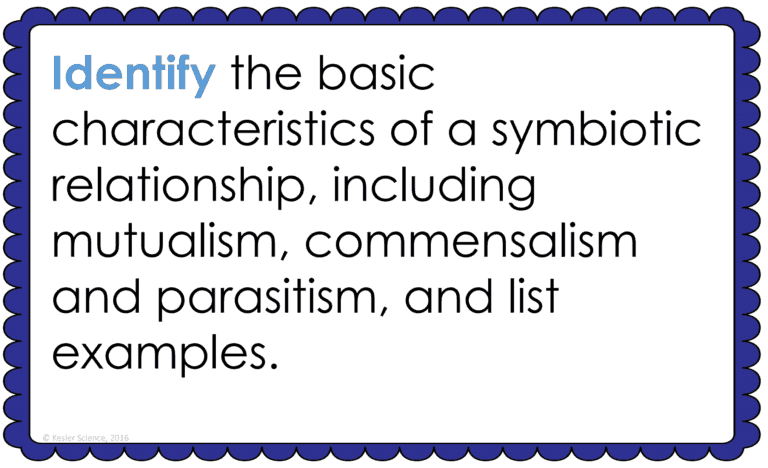
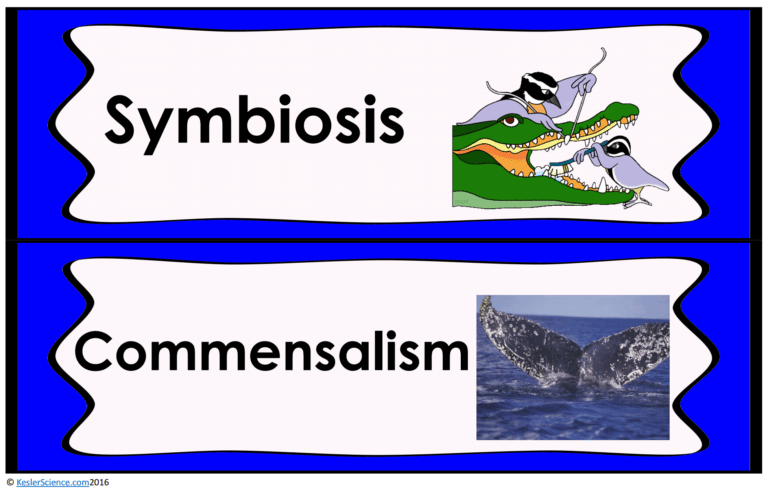
The teacher will help to clear misconceptions about symbiosis. A major misconception is that students think a symbiotic relationship can be argued to be in more than one category. If this occurs, have students justify their reasons and accept them if they have a good argument. You will find various sources that list examples differently.
Estimated Class Time for the Engagement: 20-30 minutes
EXPLORATION
This student-centered station lab is set up so students can begin to explore symbiosis. Four of the stations are considered input stations where students are learning new information about symbiosis and four of the stations are output stations where students will be demonstrating their mastery of the input stations. Each of the stations is differentiated to challenge students using a different learning style. You can read more about how I set up the station labs here.
EXPLORE IT!
Students will be working in pairs to better understand symbiosis. In this station, students identify the types of symbiosis involved in each of the pictures. Students will follow the steps and record their observations on their lab sheet.
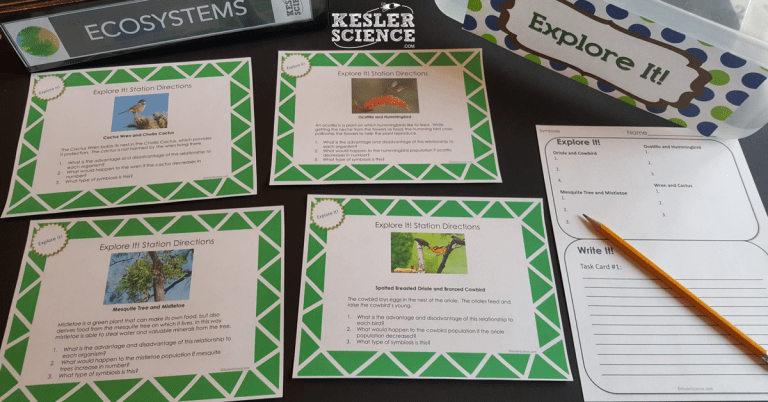
WATCH IT!
At this station, students will be watching a short video explaining symbiotic relationships. Students will then answer questions related to the video and record their answers on their lab station sheet. For example: Define symbiosis. What are the three types of symbiosis? What is an example of each type of symbiosis?
RESEARCH IT!
The research station will allow students to explore an interactive web page that helps them to understand symbiosis. Students will be instructed to complete a few tasks and record answers on their lab sheets.
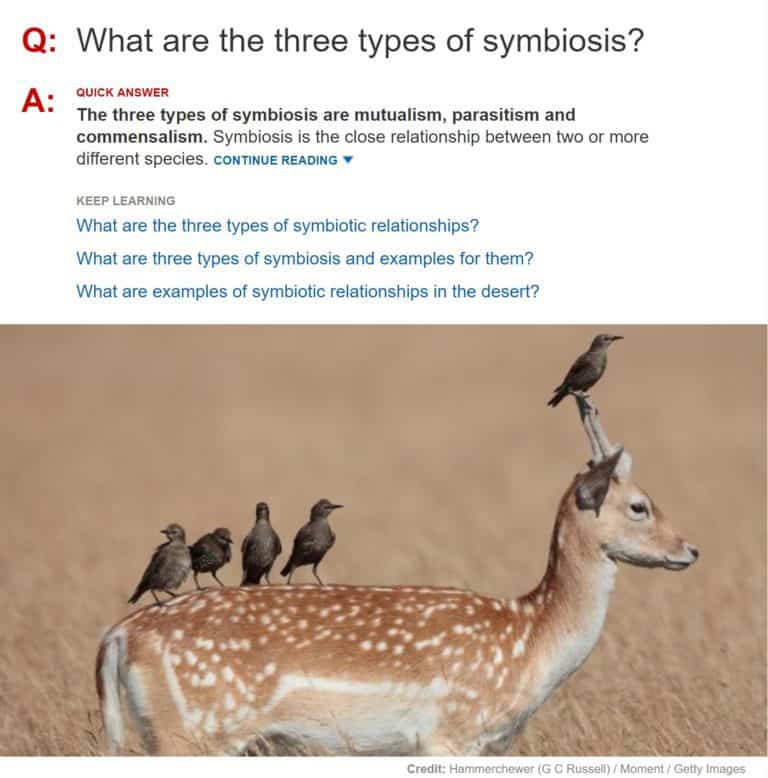
READ IT!
This station will provide students with a one page reading about symbiosis. There are 4 follow-up questions that the students will answer to show reading comprehension of the subject.
ASSESS IT!
The assess it station is where students will go to prove mastery over the concepts they learned in the lab. The questions are set up in a standardized format with multiple choice answers. Some questions include: What type of symbiosis occurs between a deer and a tick? What type of symbiotic relationship occurs between a zebra and rhino? Bacteria digesting food is what type of symbiotic relationship? Barnacles on a whale represent which type of symbiotic relationship?
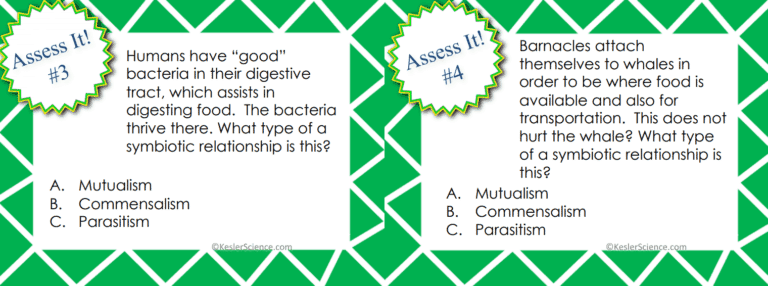
WRITE IT!
Students who can answer open-ended questions about the lab truly understand the concepts that are being taught. At this station, the students will be answering three task cards: Explain symbiosis, including the three different types: mutualism, commensalism, and parasitism. Give an example in each category.
ILLUSTRATE IT!
Your visual students will love this station. Students are to draw a picture that demonstrates their knowledge of symbiosis. Their drawing will include real animals for each type of symbiotic relationship.
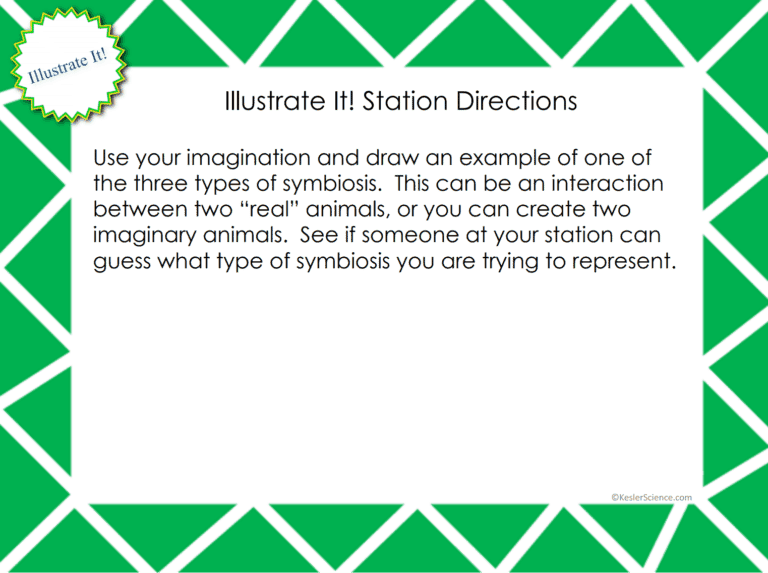
ORGANIZE IT!
Students at this station will match the sets of cards. Sets include scenarios that match the label for the correct type of symbiotic relationship. Once students have completed their organization, the teacher will check their understanding.
Estimated Class Time for the Exploration: 1-2, 45 minute class periods
EXPLANATION
The explanation activities will become much more engaging for the class once they have completed the exploration station lab. During the explanation piece, the teacher will be clearing up any misconceptions about symbiosis with an interactive PowerPoint, anchor charts, and notes. The symbiosis lesson includes a PowerPoint with activities scattered throughout to keep the students engaged.
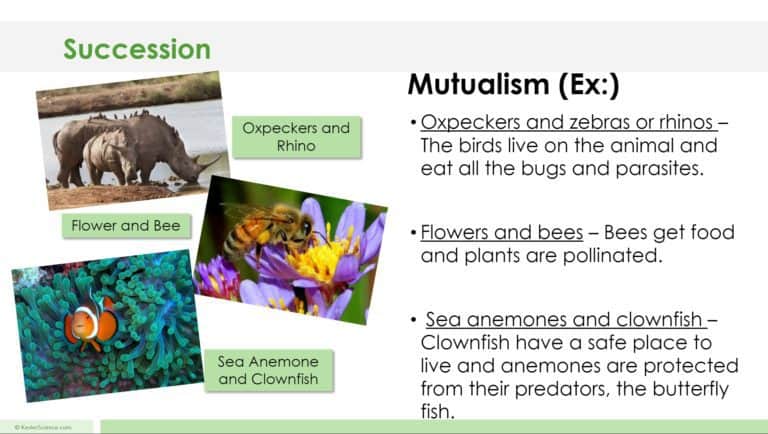

The students will also be interacting with their journals while taking notes from the PowerPoint. If you have students that need modified notes, the 5E lessons come equipped to help give every student access to the lesson.

Estimated Class Time for the Exploration: 2-3, 45 minute class periods
ELABORATION
The elaboration section of the 5E method of instruction is intended to give students choice on how they can prove mastery of the concept. When students are given choice the ‘buy-in’ is much greater than when the teacher tells them the project they will have to create. The elaboration project will allow students to create a flow chart of their choosing that will include icons, vocabulary, words to explain and pictures that help describe symbiosis.
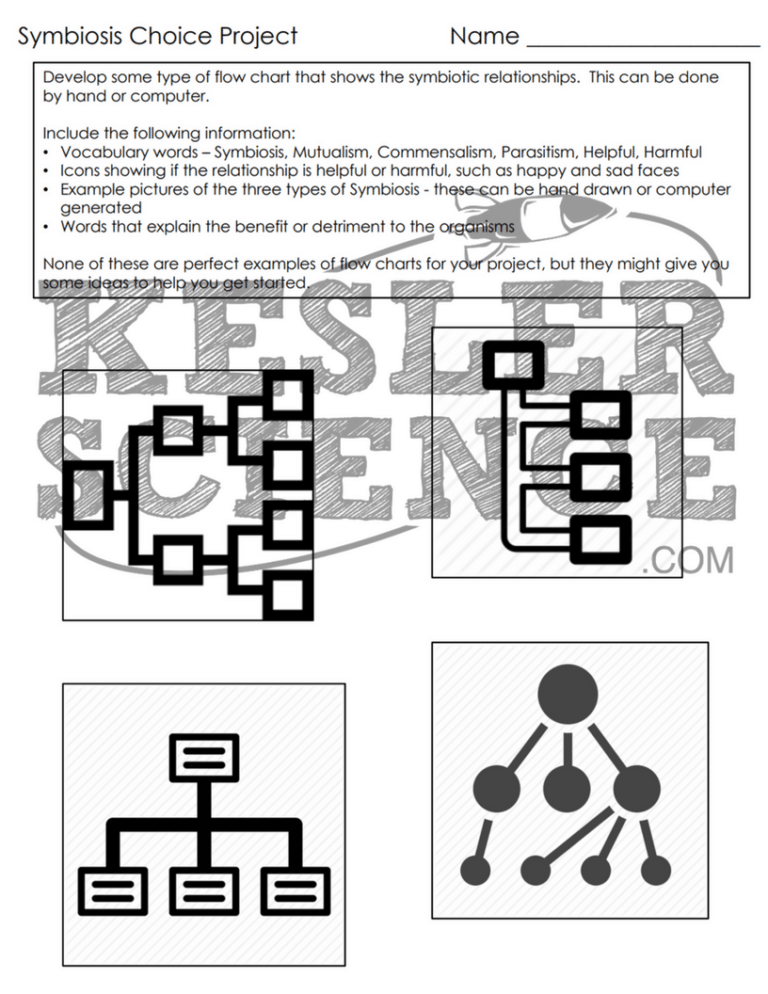
Estimated Class Time for the Elaboration: 2-3, 45 minute class periods (can also be used as an at-home project)
EVALUATION
The final piece of the 5E model is to evaluate student comprehension. Included in every 5E lesson is a homework assignment, assessment, and modified assessment. Research has shown that homework needs to be meaningful and applicable to real-world activities in order to be effective. When possible, I like to give open-ended assessments to truly gauge the student’s comprehension.
Estimated Class Time for the Elaboration: 1, 45 minute class period
DOWNLOAD THE FULL LESSON NOW
The full lesson is available for download from my TpT store. Save yourself a ton of time and grab it now.
Download Over $100 in FREE Resources
For Middle School Science
Simply create a login below and gain immediate access to a selection of our Kesler Science product line worth $100 - for FREE. There's a full version of every product type! You'll also join tens of thousands of middle school science teachers who receive timely tips and strategies straight to their inbox.


.png)



